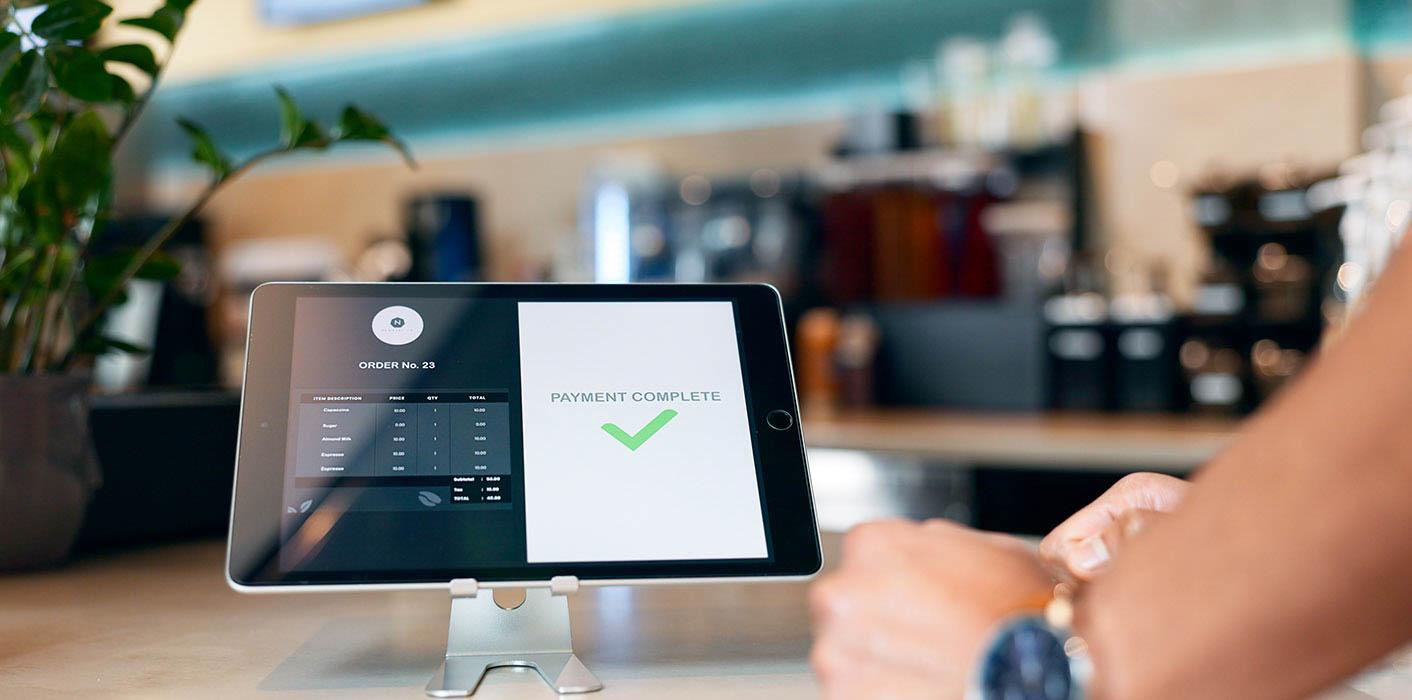
11 answers to e-check payments questions
Accepting the payment types that are convenient for your customers can keep money flowing in.
For small business owners, the bottom line is always top of mind. And one way to keep money flowing in is to accept the payment types that are convenient for both businesses and their customers. One of those is e-checks.
What is an e-check?
An electronic check – an e-check – is a digital version of a paper check. It's also known as an online check, internet check or direct debit. E-checks use the Automated Clearing House network to direct debit from a customer’s checking account into a merchant’s business bank account with the help of a payment processor.
Transmitted electronically, e-checks are making transactions quicker, safer and easier.
How do e-checks differ from paper checks?
While e-checks are digital, paper checks are, of course, paper and likely to become obsolete in the future. Fewer consumers are writing checks for everyday purchases or home expenses, preferring the convenience of digital payment types.
Additionally, more purchases are made online, inspiring new digital forms of payments that occur invisibly, effortlessly and quickly. Online retail sales in the U.S. were up 15% to $517 billion in 2018 and are expected to continue to gain a larger share of overall commerce.
E-checks also take less time to process than paper checks. There are a few reasons why:
- Paper checks take more time and manual effort to process.
- Paper checks require longer processing and hold times than e-checks.
- E-checks occur digitally, which speeds the process.
E-checks vs. credit card payments
Payment processing for e-checks works a bit differently than credit card processing. The biggest difference is that e-checks use ACH to transfer funds instead of card networks, so processing fees are lower. There are no credit card interchange fees for e-check acceptance, and fees can be as low as 10 cents per transaction. This can make a big difference to businesses that accept large or recurring payments.
E-checks vs. ACH
ACH and e-check payments are very similar. Both transfer funds from one bank account to another. In fact, e-checks process payments using the established ACH network.
The key difference is who holds the payment information. Using ACH to manage recurring bills or receive direct deposits from an employer, for example, requires enrollment with a user’s account and routing number. The more recent e-check technology, however, acts as a one-time transfer from one bank account to another.
E-checks, EFTs and wire transfers
EFT stands for electronic fund transfer. It’s an overarching term that covers several types of electronic payments, including e-checks, ACH transfers, wire transfers, PayPal payments, direct deposits, SEPA payments, local bank transfers and e-wallets. Basically, transactions like e-checks and ACH are types of EFTs. However, not all EFT transactions are e-checks and ACH.
Wire transfers move money from one bank account to another. Unlike ACH transfers, which take place in batches, wire transfers happen manually, one transaction at a time. Because of this, wire transfers cost more than ACH transactions. Another distinct difference is that, unlike ACH, wire transfers cannot be reversed once initiated and are thus considered less secure.
How e-checks work
To accept e-check payments, a business must first obtain the customer’s information, including bank routing and checking account numbers. This information can be obtained online, by phone or in person via a paper form. Most businesses today have websites and can provide a secure form page for this customer information.
Using this information, the merchant’s bank can communicate directly with a customer’s bank. Once the funds are verified, the direct debit happens through ACH.
A lot of money is passed through ACH annually. To illustrate the volume, consider that in the first quarter of 2019, ACH network volume grew 5.8% over the same quarter in 2018.
The parties involved in ACH electronic check payment processing are:
- An originator: The merchant cashing the e-check. The originator initiates the direct deposit process by obtaining the necessary information from the customer (see above).
- The business bank: The originator’s bank, also called the originating depository financial institution. The business bank places the ACH entry at the originator’s behest, aggregates payments from a variety of customers and sends the payments in batches to an ACH operator.
- An ACH operator: The ACH operator sorts the fund request and settles the funds into the business bank.
- The customer’s bank: A receiving depository financial institution receives the request, verifies that the funds are available, debits the customer’s account and credits the business account.
While ACH funds have taken a few days to post in the past, the National Automated Clearinghouse Association that oversees ACH has enabled new capabilities that make same-day funding possible.
Can accepting e-checks help increase revenue?
E-check payments help businesses keep payments coming in because checking account numbers rarely change as often as credit card numbers, so there’s less likelihood for payment breakage.
While e-check acceptance can be good for any type of business, the payment type is especially well suited to the following:
- Subscription-based businesses: From music to memberships to magazine subscriptions, e-checks make recurring payments, autopay and auto-renewal easy and convenient for businesses and their customers. Any business with a subscription-based model, whether an online tea-of-the-month club or a health club with monthly fees, would do well to consider electronic check payments.
- Online businesses: A business can sell a customer on its products once and continue to collect monthly, sometimes for years. It’s the most efficient sales model available, and it’s been exploding online over the past few years.
- Businesses that accept large payments: With ACH moving the funds for electronic checks, banks talk directly to other banks. By eliminating the middlemen involved in processing credit card payments, businesses save money by avoiding interchange fees. If your business regularly processes payments in the hundreds or thousands of dollars, you can potentially save a significant amount of money by accepting electronic check payments.
Security and e-check payments
Electronic checks are inherently more secure than paper checks. They are also subject to additional consumer protections with Regulation E.
Following are five major security components for e-check transactions:
- Authentication: This is the process whereby the payments provider verifies the individual submitting the account information. Authentication ensures that fraudulent payment information is not submitted to the merchant.
- Encryption: This is the process of “masking” sensitive data, rendering it non-sensitive – and thus useless – if it’s stolen. Encryption is required for all ACH transactions, including e-checks that occur over unsecured electronic networks.
- Public key cryptography: This is part of the encryption process and is used in ciphering the data to protect it in transit.
- Digital signature: A digital signature with time stamps is an encryption process used to ensure that e-check transactions cannot be fraudulently duplicated.
- Certificate authorities: Certificate authorities issue digital certificates, like the SSL Certificate, to protect information, encrypt transactions and enable secure communication.
- Duplicate detection: This is a fraud detection strategy that monitors for duplicate e-check transactions and suspicious activity.
How do you send an e-check?
An e-check service is needed for a business to send e-checks. A business may want to consider payment processing solutions that will support their business type and desired scalability and speed of processing. Verified security should also be a high priority.
Once the account has been established and connected to a bank account, sending an e-check is simple: Enter the recipient’s name, email, the payment amount and a description. Confirmation notifications and online e-check books can also be helpful tools for managing e-check payments.
How do I accept an electronic check?
To begin accepting e-checks, a business must work with a payment processor or payments gateway and a financial institution that can facilitate this type of transaction. The type of hardware and software needed depends on the way electronic checks will be accepted.
For example, a merchant that wants to accept e-checks at the point of sale will need a check scanner. To accept e-checks online, it will need payments software equipped to accept this payment type.
Is it time to add e-checks to your payment options?
The more payment options a customer has, the more likely they are to spend their money and return to the business. By accepting e-checks, a business naturally expands its revenue potential.
To find out more about electronic check payment processing, talk with your bank and your payment processor. They can help you decide if it’s the right time to incorporate e-checks into your mix of payments and how to maximize this payment type.
Related Insights

